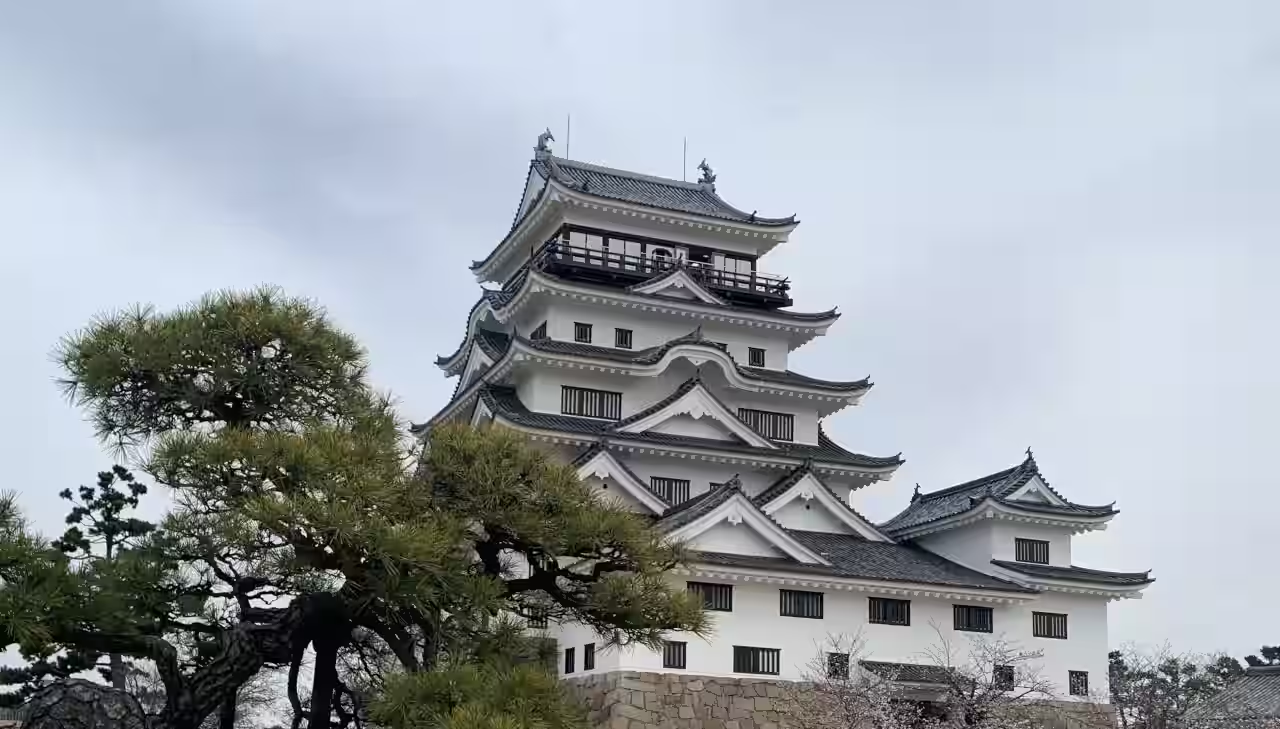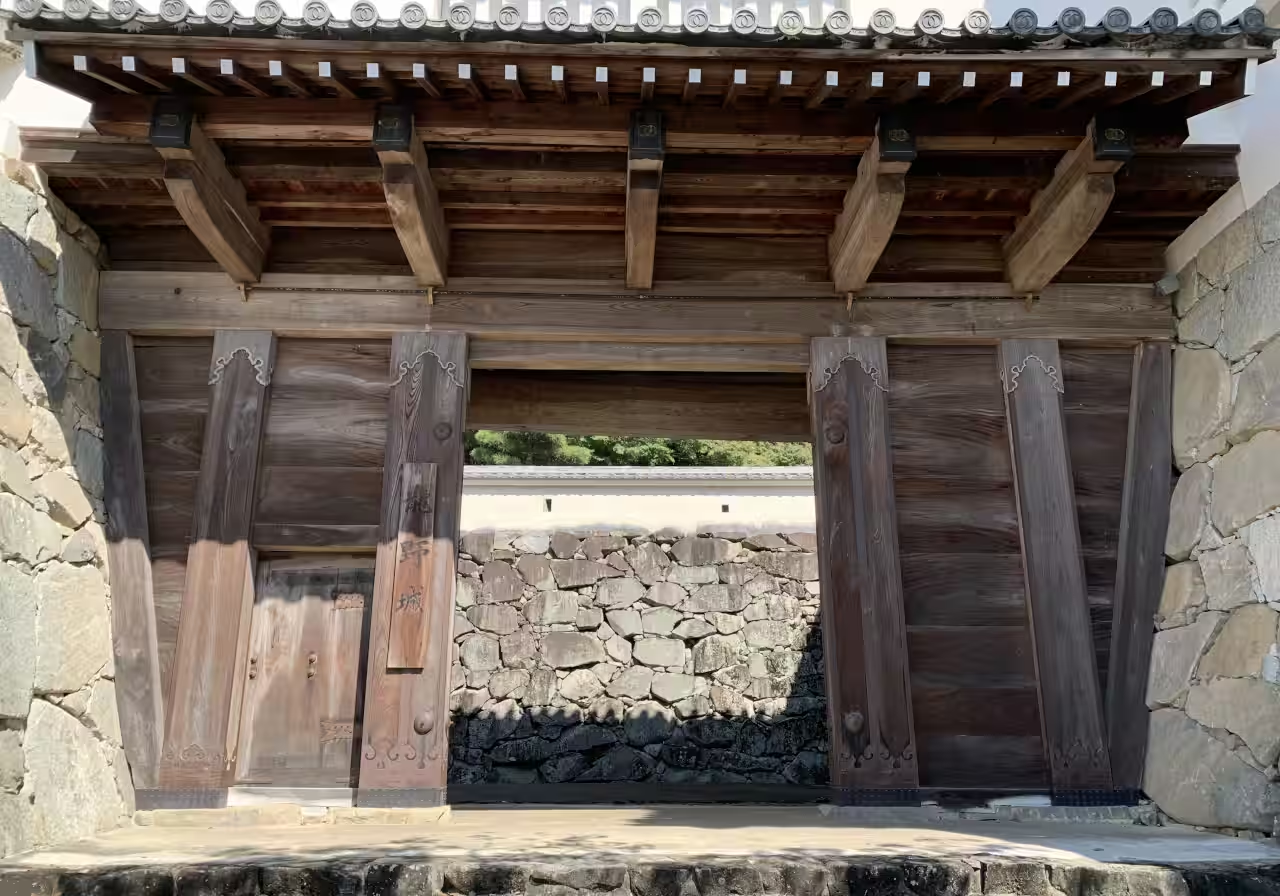In my great-grandfather’s ancestry memo, there is a brief entry listing Takahashi Senzo of Kannabe, Hiroshima, and Fumi - Senzo’s daughter - as his mother-in-law. The note continues with a few simple lines:
The Takahashi family ancestors were lords of Kamo Castle and held a prominent historical position in Kannabe. Kan Chazan is from Takahashi and a distant relative. Kan Chazan was the teacher of Rai Sanyo.
These few sentences set me on an unexpected journey - one filled with discovery, family connections, and powerful lessons in history.
Kan Chazan was regarded as one of the finest poets of his time. In 1792, Lord Abe Masatomo of the Fukuyama clan appointed him as a Confucian scholar and physician. Chazan was also a respected thinker and educator who established a private school in Kannabe. He opened the school to all—regardless of background, social status, or occupation. Over the years, the school attracted several thousand students from across the country.
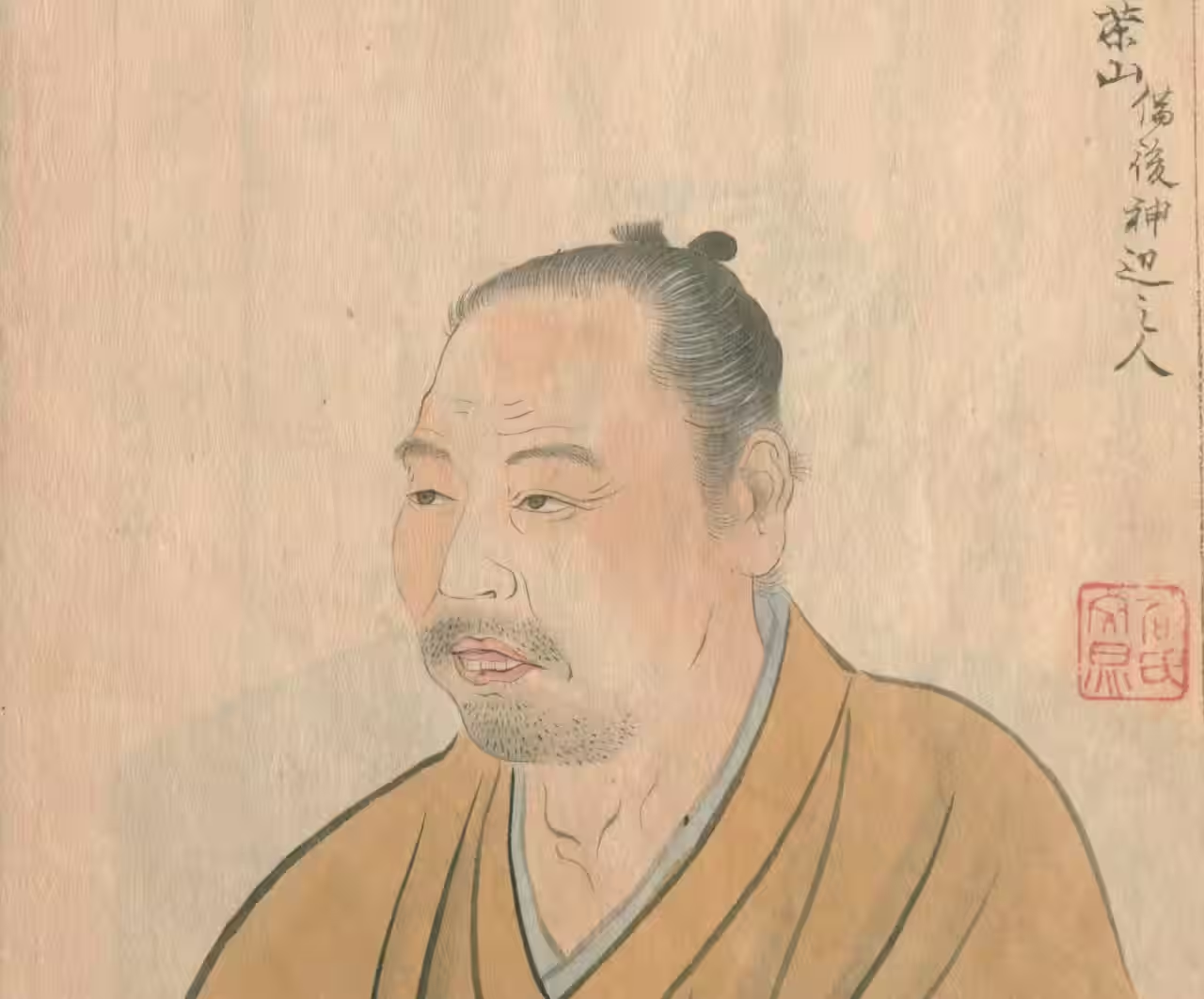 Kan Chazan, poet, scholar and educator from Kannabe, Hiroshima
Kan Chazan, poet, scholar and educator from Kannabe, Hiroshima
I found the mention of Rai Sanyo somewhat out of place, as he was neither related to our family by blood nor through adoption. Rai Sanyo was a Confucian scholar from the Hiroshima domain. At the age of 21, he caused a stir by attempting to leave the domain without permission - an act considered a serious offense at the time. As punishment, he was confined to a single room for five years under domain law. After his release, he wrote to Kan Chazan, who subsequently appointed him as the chief lecturer at his private school in Kannabe. However, Sanyo left for Kyoto after just one year.
During his confinement and over the following two decades, Sanyo authored Nihon Gaishi, a 22-volume history of Japan’s samurai rule. The work became a bestseller and a major source of inspiration for anti-Tokugawa sentiment and the imperial restoration movement. By portraying figures such as the 47 Ronin and imperial loyalists as moral exemplars, it helped shape national discourse and contributed to the eventual fall of the Tokugawa shogunate.
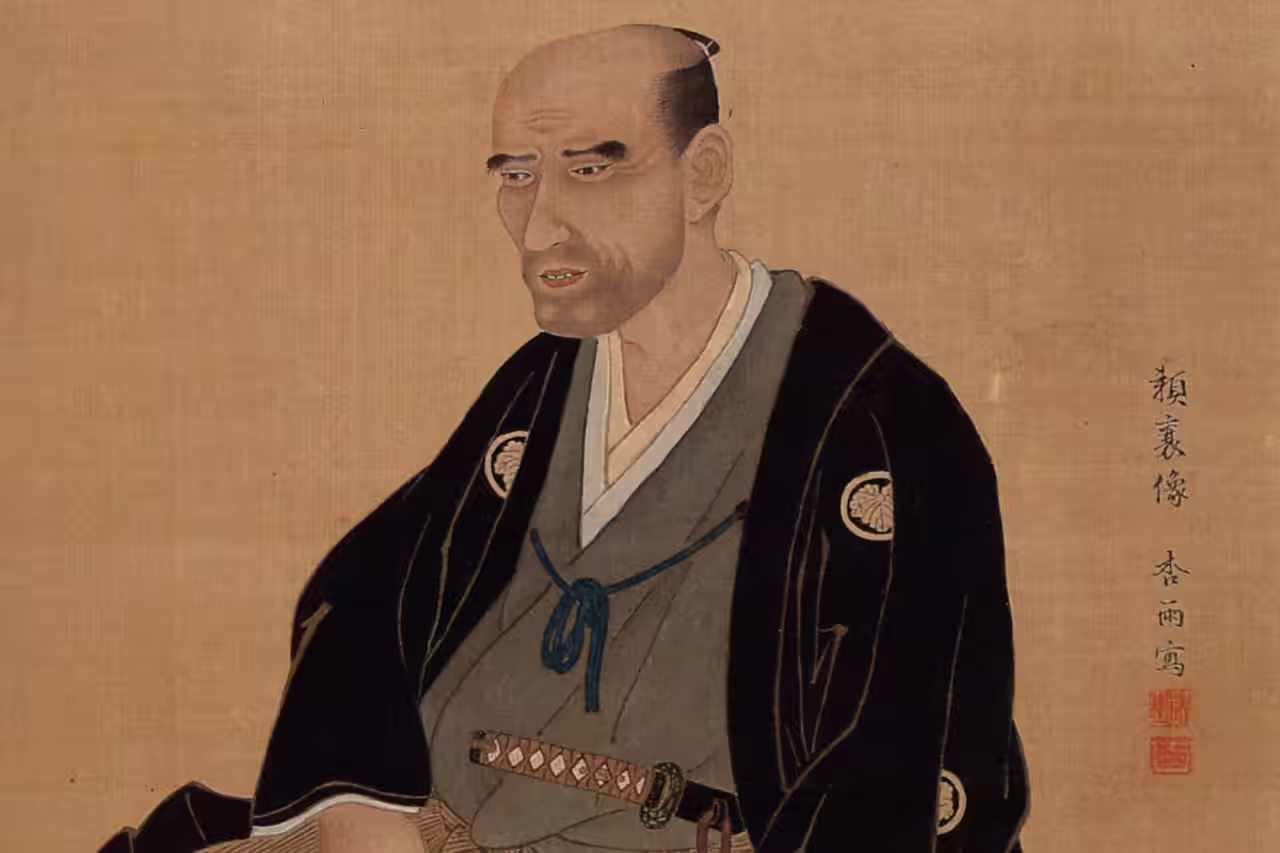 Rai Sanyo, confucian scholar
Rai Sanyo, confucian scholar
As my great-grandfather noted, Kan Chazan did indeed serve as Rai Sanyo’s mentor and teacher. It is likely he mentioned Sanyo to underscore Chazan’s historical significance—and, by extension, to highlight the distinguished lineage from which our family descends.
Chazan was originally from the Takahashi family. His father was born into the Takahashi family but was later adopted into the Kanba family, who operated honjin (official inns for daimyos) in Onomichi, Hiroshima. Although Chazan was the eldest son, he passed the headship of the Kanba family to his younger brother and established a separate household under a new surname: Kan. Thus, while he carried the Kan name, Chazan was Takahashi by blood.
Hoping to find a clue about Takahashi Senzo - my third great-grandfather - I searched his name online and, to my surprise, came across a link to a 200-page biography of Hojo Katei, authored by Mori Ogai.
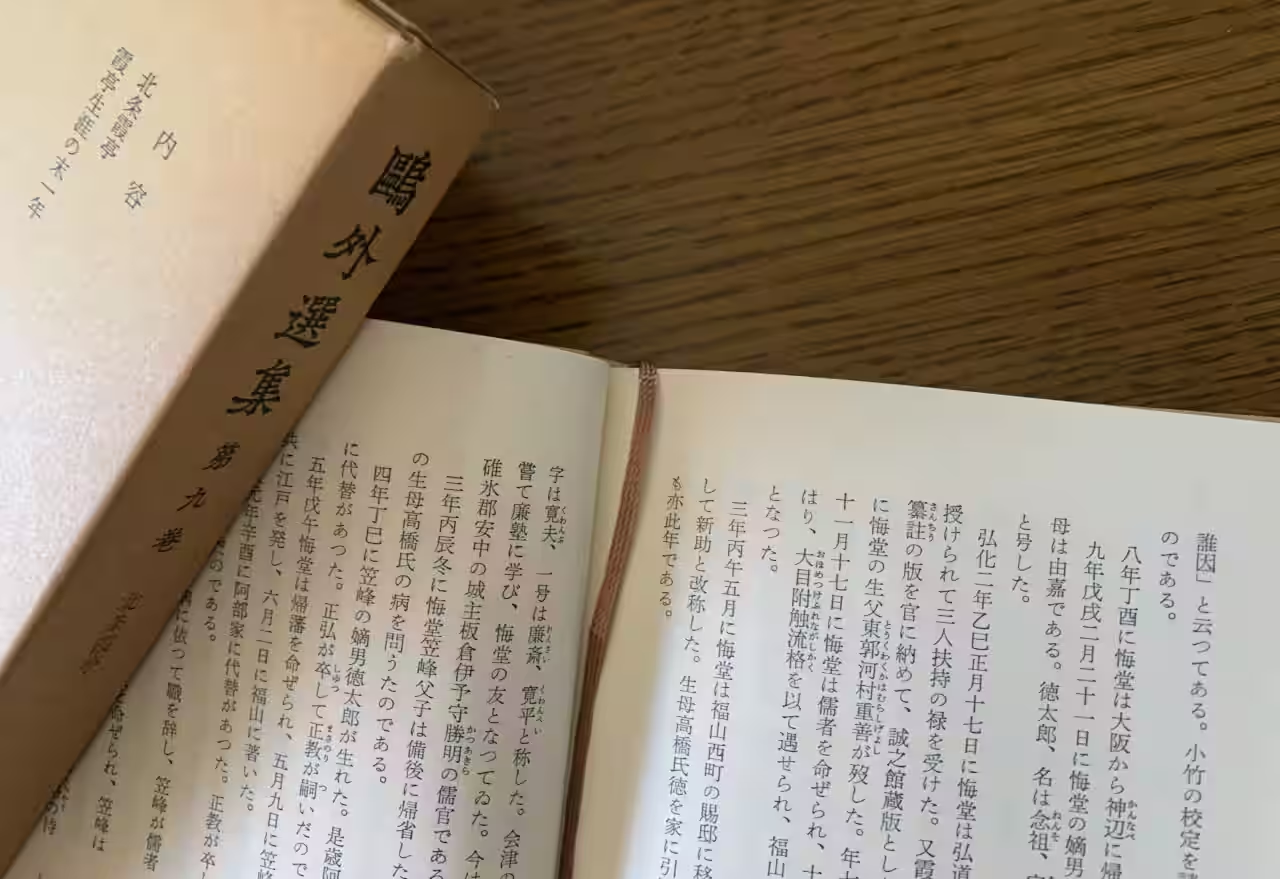 The biography of Hojo Katei by Mori Ogai
The biography of Hojo Katei by Mori Ogai
Ogai mentions in section three that he borrowed Katei’s documents from Takahashi Senzo through a mutual acquaintance. Before reading Katei’s biography, I had no idea who Hojo Katei was. But as I read on, I discovered that his story was closely intertwined with that of my own ancestors. Since Ogai is such a renowned novelist, I recall trying to read a few of his books back in high school - only to find them rather dull. So it came as a complete surprise to learn that one of his works contains my family’s history in such remarkable detail.
Hojo Katei, the central figure of this biography, was born in 1780 in Shima (now part of Mie Prefecture) as the eldest son of a local physician in a family of doctors spanning three generations. The family traced its lineage back to Hojo Soun, the founding ancestor of the later Hojo clan.
From an early age, Katei showed a strong interest in scholarship. At 18, he traveled to Kyoto to study Confucianism and medicine. While in Kyoto, he wrote to Kan Chazan, asking him to review his poetry. This correspondence eventually led Katei to move to Kannabe, Hiroshima, where he became the chief lecturer at Chazan’s private school. As was the case with Kazan, he was later hired by Fukuyama clan and appointed as a professor at the Fukuyama domain’s Kodokan academy (later reorganized as Seishinkan, the predecessor of today’s Seishinkan High School).
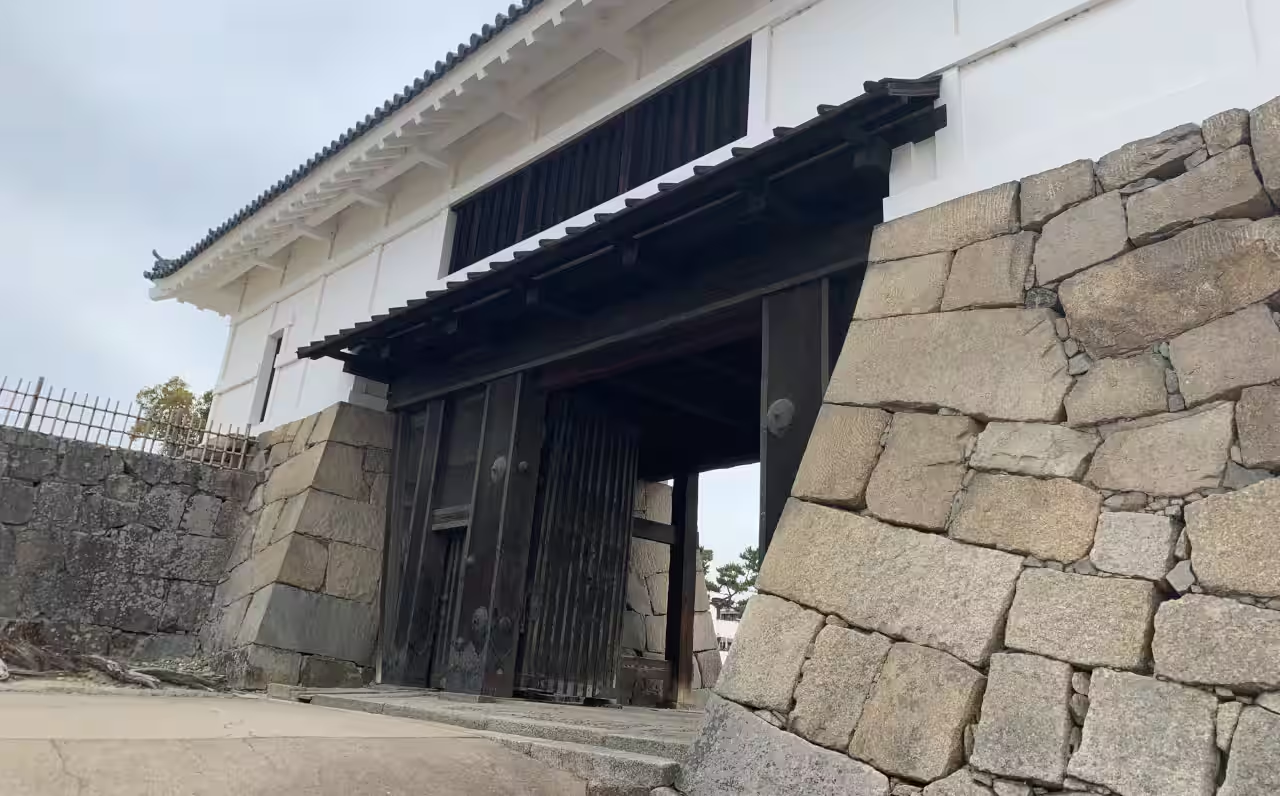 Main gate of Fukuyama castle
Main gate of Fukuyama castle
The Abe family, rulers of the Fukuyama domain, were a daimyo lineage closely aligned with the Tokugawa shogunate. As part of the shogunate’s inner circle, the Abe and many of their retainers spent much of their time stationed in Edo (modern-day Tokyo), where they were involved in national governance. Two years after Katei relocated to Edo to serve Lord Abe, he died of illness there at the age of 44.
Katei lost his son at a young age and was left without an heir. After Katei’s death, Kan Chazan, recognizing the importance of preserving the Hojo family line, approached Kawamura Shigeyoshi, the clan’s physician. Shigeyoshi agreed to have his second eldest son, Shinsuke, succeed the Hojo family. Shinsuke was renamed Hojo Kaido and became a student of Kan Chazan. After Chazan’s death, Kaido moved to Edo (Tokyo) at the age of 17 to continue his studies.
In Edo, Kaido studied under a few renowned scholars, including the Confucian master Sato Issai at the prestigious Shoheizaka Gakumonjo academy.
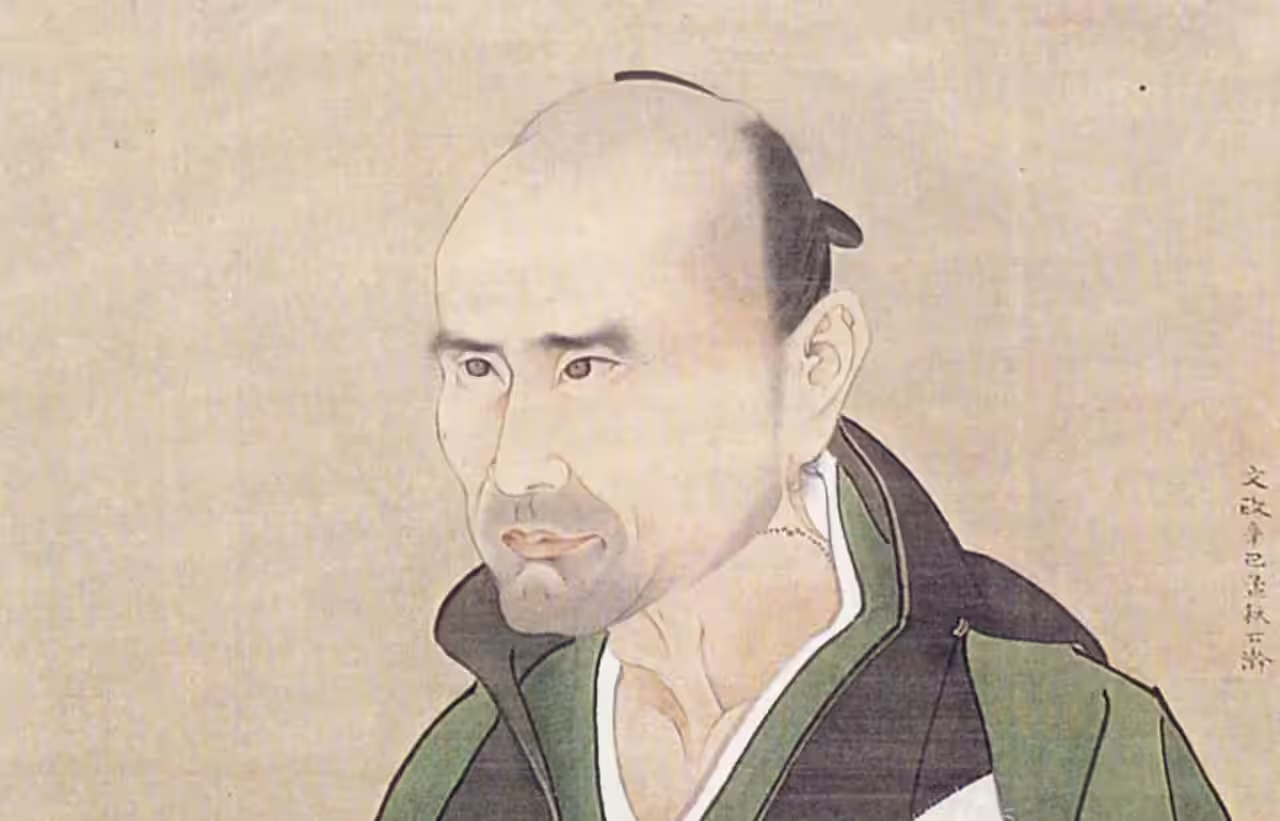 Saito Issai, Confucian master
Saito Issai, Confucian master
After several years of study, he returned to Fukuyama in 1831 at the age of 24. The following year, he married a relative of Kan Chazan, and a few years later, their first son, Kasamine, was born.
In 1845, Kaido was appointed to the position of Yomikake at the Kodokan academy. He was granted a stipend of three fuchi - a unit equivalent to the food ration for three men. That November, he was officially recognized as a Confucian scholar and his stipend was raised to ten fuchi. He was also appointed to the status of Ometsuke (chief inspector).
In 1847, Kaido’s wife Yuka passed away. The following year, he remarried into the Kuwata family. In 1849, his second son, Senzo, was born. Senzo would later change his family name from Hojo to Takahashi - a story I’ll share later in this post. He is the same Senzo Takahashi referred to in the previously mentioned memo left by my great-grandfather.
In March 1855, Kaido was appointed to serve in Edo and moved to Maruyama-yashiki, the Fukuyama clan’s residence located in what is now Tokyo’s Bunkyo district. There, he served as a tutor (jiko) to Abe Masahiro, the seventh lord of the Fukuyama clan, who held the influential position of Roju-shuza - head of the Roju council of the Tokugawa shogunate, a role roughly equivalent to today’s Prime Minister.
During the late Edo period, the Tokugawa shogunate faced a steady financial decline. While its national isolation policy remained in effect - with only the Netherlands and China permitted as trading partners under strict regulations - foreign ships from Britain, the United States, and Russia, followed by France, began appearing off Japan’s coasts, exerting growing external pressure.
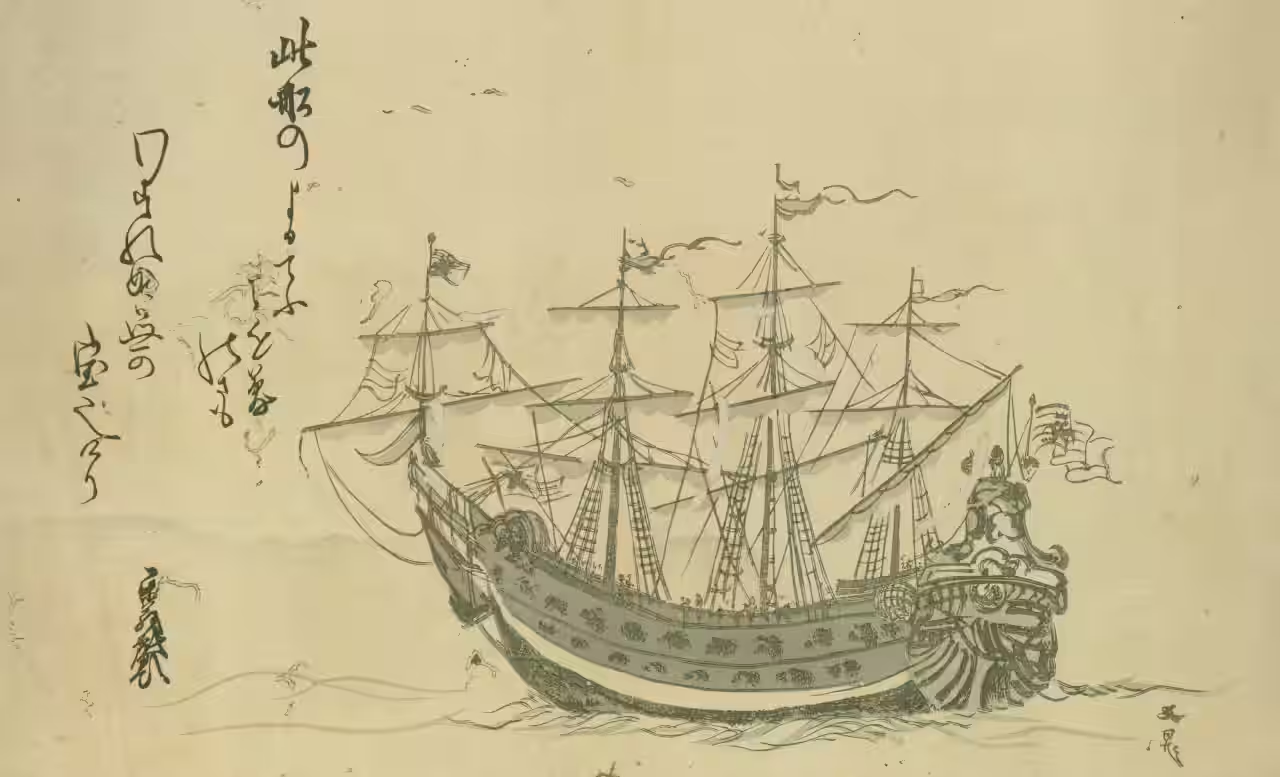 Perry’s Black Ship, powered by a coal-fired steam engine, ten times larger than the largest Japanese vessels of the time
Perry’s Black Ship, powered by a coal-fired steam engine, ten times larger than the largest Japanese vessels of the time
Abe Masahiro concluded the Treaty of Peace and Amity with the United States during Commodore Perry’s second visit with the Black Ships, effectively ending Japan’s roughly 200-year-long isolation policy. Abe died in Edo in 1857. The following year, Kaido completed his service and returned to Fukuyama.
In 1864, Kaido was appointed by the 9th lord, Abe Masakata, to serve within the inner quarters of the Fukuyama domain and was treated as a member of the class responsible for overseeing the retainers. Having served and earned the trust of three generations of the Abe lords - and having advocated for coastal defense measures during one of the most turbulent periods in Japan’s history - Kaido passed away on January 16, 1865, at the age of 58. His works include Collected Poems and Writings (Shibun-ko, 4 volumes), A Proposal for Maritime Defense (Kaibo-saku, 1 volume), and A Plan for Castle Construction (Kencho-an, 1 volume).
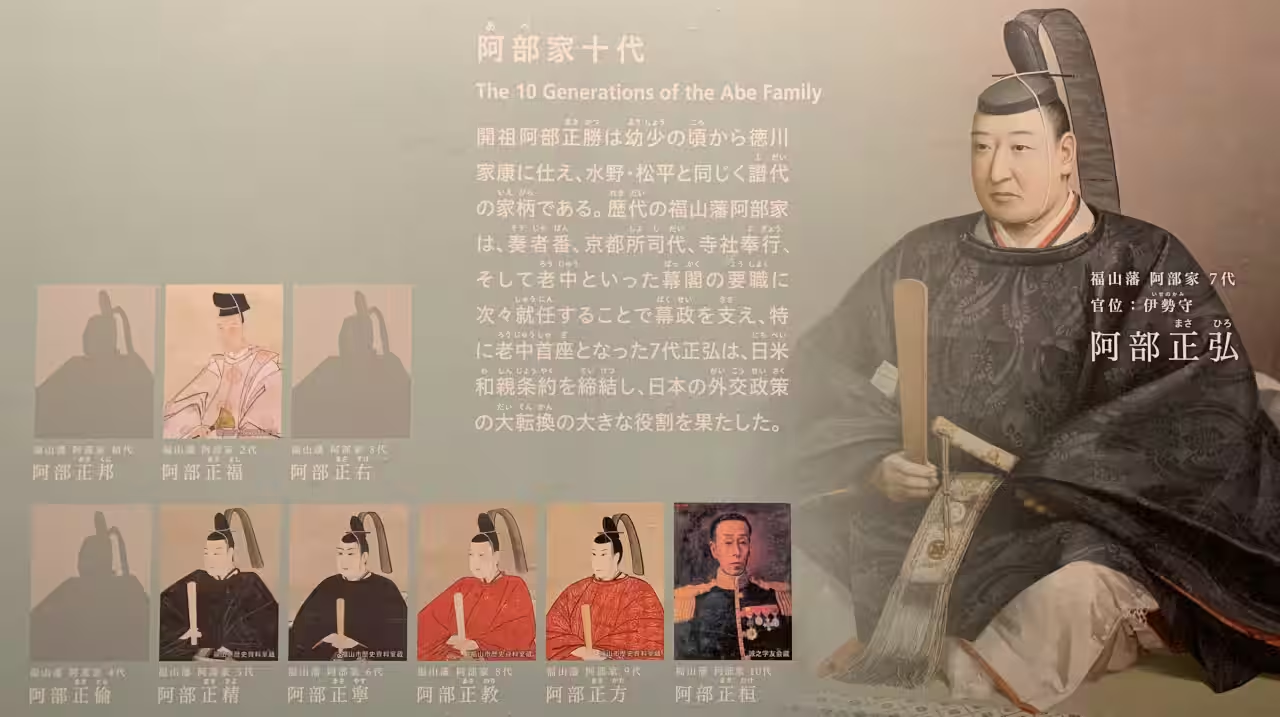 7th lord Abe Masahiro (larger portrait on the right), along with the 8th and 9th lords, both wearing red garments - whom Hojo Kaido served
7th lord Abe Masahiro (larger portrait on the right), along with the 8th and 9th lords, both wearing red garments - whom Hojo Kaido served
At the end of the Edo period, the Tokugawa shogunate faced growing opposition from powerful tozama (outside lord) domains such as Choshu, Satsuma, and Tosa. These domains, critical of the shogunate’s mishandling of foreign pressure and internal stagnation, began modernizing their military forces by importing rifles, cannons, and Western technologies - primarily from Britain and other European countries - openly defying shogunate directives.
In 1864, Abe Masakata, lord of the Fukuyama domain, was ordered by the shogunate to participate in a punitive expedition against the Choshu clan, based in Hagi, Yamaguchi. Kasamine, Kaido's first son, joined the campaign as a Hiroma-ban guard assigned to the lord. On December 10, 1865, during the second campaign, Fukuyama troops engaged Choshu forces in Masuda (present-day Shimane Prefecture) and suffered a defeat.
In January 1868, when Choshu forces advanced on Fukuyama Castle, the domain capitulated and subsequently changed allegiance to support the imperial restoration. By March of the same year, complying with an imperial directive, the Fukuyama clan formally joined the anti-Tokugawa coalition. Its forces were deployed to key locations including Settsu, Hyogo, Tempozan, Osaka, Kyoto, and finally Hakodate.
Following the conclusion of the Battle of Hakodate in June 1869, which eliminated the remnants of the Tokugawa shogunate army, Kasamine returned to Fukuyama. That November, he was assigned to serve at Maruyama-yashiki. However, on July 28, 1870, Kasamine eloped with a prostitute from Nezu-Takadaaya - an act regarded at the time as profoundly dishonorable. As a result, the Hojo family of Fukuyama lost its official status and was struck from the domain’s registry.
Kaido had passed away at the age of 58 on January 16, 1865, nearly three years before the restoration of imperial rule in November 1867. After his death, Kasamine became the head of the Hojo family. Yet, owing to his misconduct, the family was dispersed: Kaido’s widow and Kasamine’s stepmother were taken in by the Kuwata family, his wife by the Harada family, and his son was placed in the care of the Kan family.
Kasamine’s younger brother, Senzo - then just 13 years old - was initially raised by relatives on their grandfather’s side from the Kawamura family, and later by Toku, their grandmother from the Takahashi family - the same Takahashi family from which Kan Chazan’s father originated. Over time, Senzo adopted the Takahashi name as his own. This also explains how Takahashi Senzo came to inherit the documents belonging to Hojo Kaido.
Most of the story here is drawn from the biography of Hojo Katei. Originally published as a newspaper serial, it was not well received and suffered interruptions over a four-year span, with portions later appearing in two different monthly magazines. Several months after completing the final manuscript, Ogai fell ill and passed away. Had he died any earlier - before writing the final chapter - I might never have learned the details of my own family history. Fittingly, that final chapter was devoted to Kaido and the family he left behind.
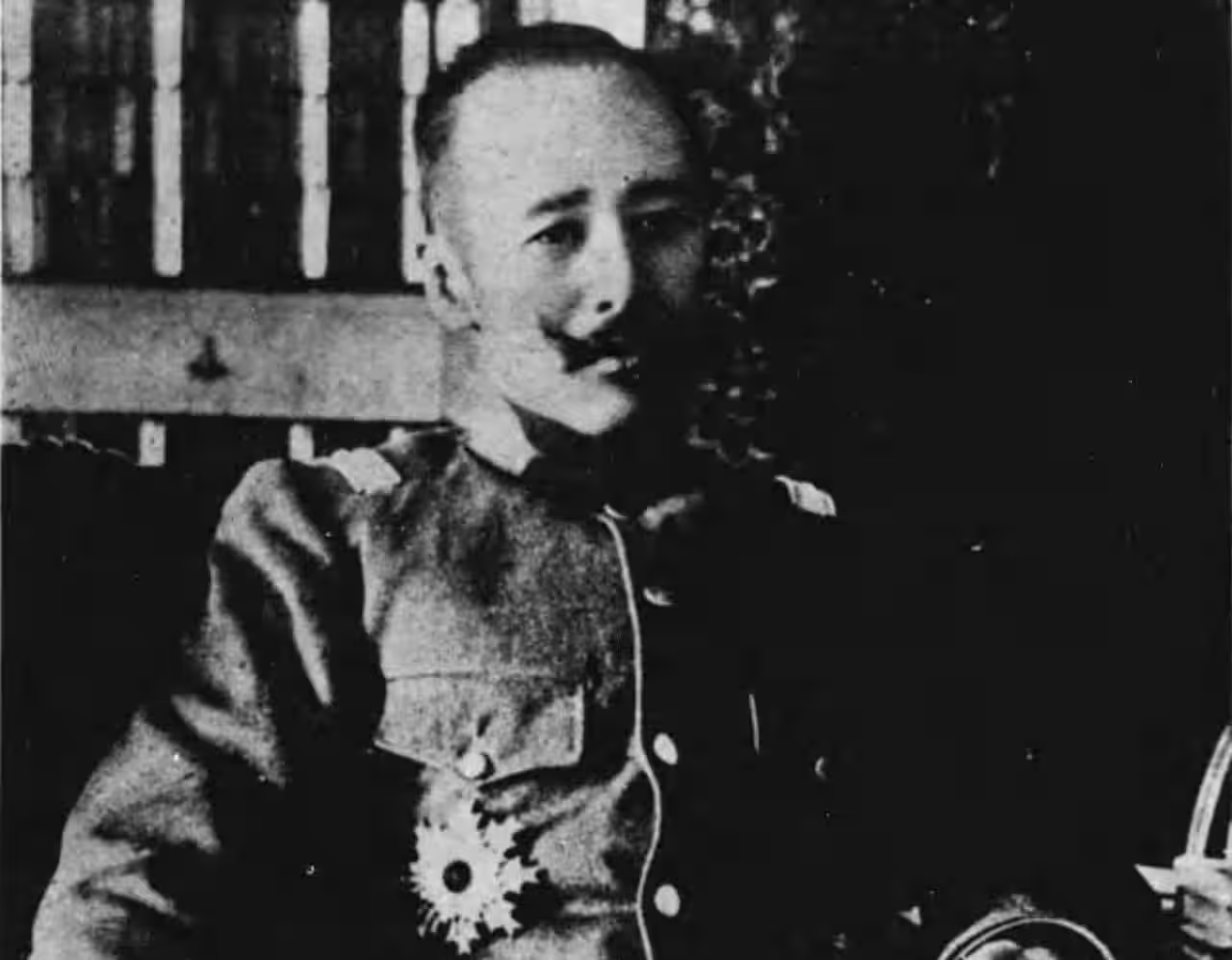 Mori Ogai - novelist, critic, translator, army physician, government official, and educator
Mori Ogai - novelist, critic, translator, army physician, government official, and educator
By a remarkable twist of history, this obscure and long-overlooked biography became the key that unlocked the story of my ancestors. Takahashi Senzo, who had safeguarded his father’s documents for decades, entrusted them to Ogai - making it possible to complete the life story of his step-grandfather, Hojo Katei. Senzo’s father, Hojo Kaido, had once served Abe Masahiro, one of the most influential statesmen during the final years of the Tokugawa shogunate. Senzo’s half-brother, Kasamine, would later witness - and take part in - the collapse of the samurai era. Without this quiet chain of memory, nearly lost to time, I might never have discovered any of it.
In April 2025, I visited the grave of Hojo Kaido at Torinji Temple, just a 10-minute walk from Fukuyama Castle. After 160 years since his passing, my daughter and I were able to reconnect with him as his descendants and pay our respects.
 Grave of Hojo Kaido at Torinji temple in Fukuyama
Grave of Hojo Kaido at Torinji temple in Fukuyama
After returning from the trip, I dug deeper into Kaido's life. According to The Biographies of Eminent Figures of Geibi (referring to present-day Hiroshima and Okayama), published in 1925, Kaido had a strong fondness for sake. However, out of respect for his beloved mother, he practiced restraint and committed himself to self-discipline and a healthy lifestyle.
Next time, I'll be sure to bring sake to his grave. This time, he can enjoy as much as he likes.
